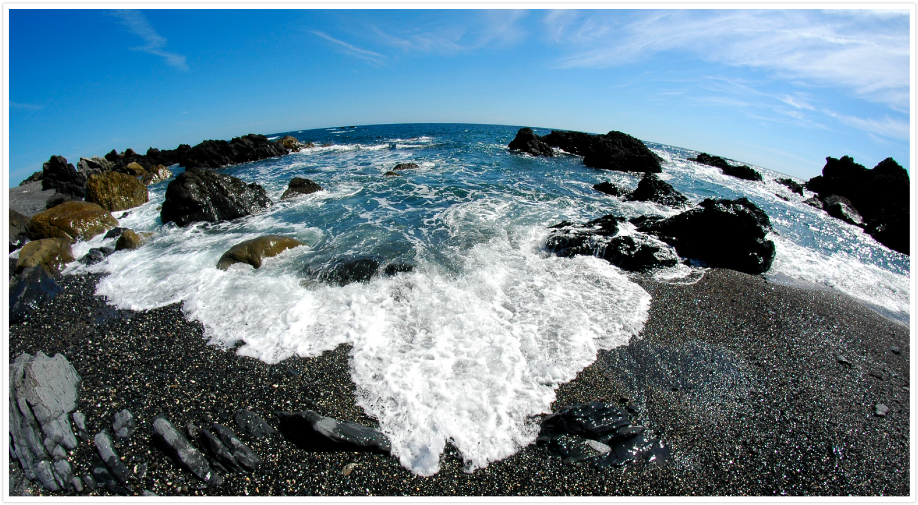
 uroto UNESCO Global Geopark is in Kochi Prefecture on the south-eastern tip of Shikoku. It juts out into the Pacific Ocean. It is the forefront of the birth of new land through the subduction of the oceanic plate and uplifting from great earthquakes along the Nankai Trough off the coast of Muroto. The sediments at the bottom of the deep sea have been pushed against the continental crust and lifted up to form the foundations of the land. It possesses a rich heritage of diverse geological formations.
uroto UNESCO Global Geopark is in Kochi Prefecture on the south-eastern tip of Shikoku. It juts out into the Pacific Ocean. It is the forefront of the birth of new land through the subduction of the oceanic plate and uplifting from great earthquakes along the Nankai Trough off the coast of Muroto. The sediments at the bottom of the deep sea have been pushed against the continental crust and lifted up to form the foundations of the land. It possesses a rich heritage of diverse geological formations.
Muroto UNESCO Global Geopark is a place where you can read the history of the Earth as it is written in the rocks. And while the land continues to rise and change, it serves as the foundation for the forms of life and culture in Muroto.
We can discover how local people have been dealing with the ever-changing landforms.
-
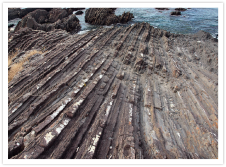

The turbidites in Muroto were formed at the bottom of the sea by a process of layering of sand and mud. They hardened over time, and were twisted and brought above sea by plate movements and earthquakes. Now their dramatic forms and shapes serve as images of the power of the Earth.
-


While living tube worm colonies can be found attached to the rocks at the present sea level in Muroto, there are also a remains of former colonies attached to rocks on land. Some of the remains are thousands of years old, and are indicators of Muroto’s rise from the sea.
-
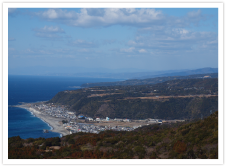

Muroto’s marine terraces were formed by wave erosion creating platforms, and then sea-level changes and land uplift raising those platform above sea-level, creating a cliff, and conditions for the formation of the next platforms. The higher the terrace is, the older.
-
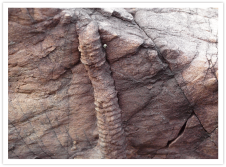

Even with the latest equipment, it is difficult to reveal much about the lives of deep sea organisms, but in Muroto Global Geopark, you can find trace fossils of such organisms in the rocks. Research on these fossils is still ongoing in order to reveal the details of the deep-sea organisms
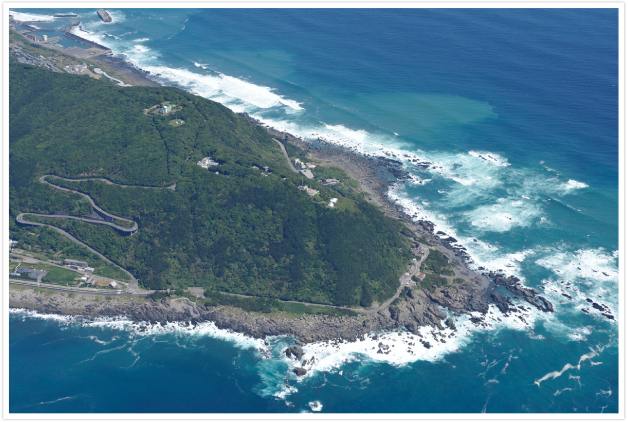
 n the coast and in the mountains of the geopark are fossils, remnants of life that once lived on the land when it formed part of the ocean floor. Today that same land is the foundation for life in Muroto. Extending into the Pacific, Muroto’s mild climate is influenced by warm ocean currents that flow along it. Coastal and subtropical plants grow along the coastline. Some have branches twisted by wind, much like the rocks that were twisted by the Earth. Some cling to these rocks with their roots, to better endure the coastal weather. Along with the land and the climate that shaped them, they form the natural environment of Muroto UNESCO Global Geopark.
n the coast and in the mountains of the geopark are fossils, remnants of life that once lived on the land when it formed part of the ocean floor. Today that same land is the foundation for life in Muroto. Extending into the Pacific, Muroto’s mild climate is influenced by warm ocean currents that flow along it. Coastal and subtropical plants grow along the coastline. Some have branches twisted by wind, much like the rocks that were twisted by the Earth. Some cling to these rocks with their roots, to better endure the coastal weather. Along with the land and the climate that shaped them, they form the natural environment of Muroto UNESCO Global Geopark.
-
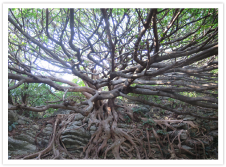

Subtropical and costal vegetation, such as the representative Akou, grow along the coastline of Muroto. They are specially adapted to the challenges and opportunities of the local climate. The Subtropical Forest and Coastal Vegetation at Cape Muroto has been designated as a natural monument by the national government.
-
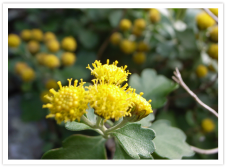

Numerous wild flowers flourish in Muroto’s mild weather. There is crinum, aloe, and many others including a variety of chrysanthemum found only in Muroto and surrounding areas. The stretch of road along Sakamoto coast is also lined with bright red hibiscus.
-
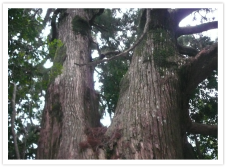

The land of Muroto is an ancient base for life. A visit to the Mt. Dannotani Site will find you surrounded by many old cedar trees. Some have a circumference of up to 13 meters, and most of these wild trees have trunks that are distinctively twisted near the base.
-
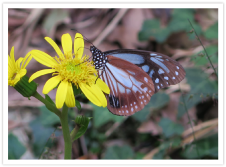

Muroto, as well as being home to diverse wildlife, is also a point through which life passes, frequented by animals such as whales and the chestnut tiger butterfly, which stops in Muroto on its annual migration south ― a trip that sometimes takes it to places as far away as Hong Kong.
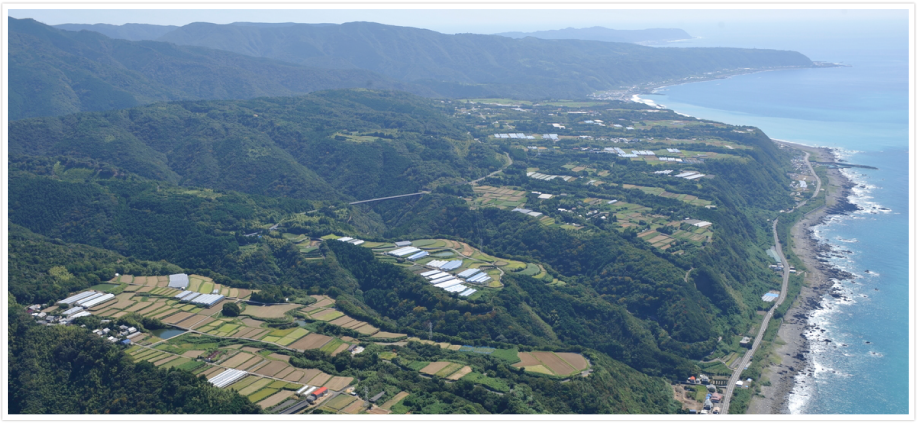
 ust as the plants and animals have adapted to the landscape and climate of Muroto, so have the people. Their culture and way of life are shaped by, and shape, their environment. Even down to the spaces they live in, with traditional rural townhouses built to withstand frequent storms and typhoons. Local industry also emerged from the resources available: farming on the marine terraces, charcoal production using local timber and techniques, and a fishing and whaling industry that lead to the development of cultural practices and artifacts that still remain even after whaling in Muroto has ceased. This connection between land, environment and people is what Muroto UNESCO Global Geopark is about.
ust as the plants and animals have adapted to the landscape and climate of Muroto, so have the people. Their culture and way of life are shaped by, and shape, their environment. Even down to the spaces they live in, with traditional rural townhouses built to withstand frequent storms and typhoons. Local industry also emerged from the resources available: farming on the marine terraces, charcoal production using local timber and techniques, and a fishing and whaling industry that lead to the development of cultural practices and artifacts that still remain even after whaling in Muroto has ceased. This connection between land, environment and people is what Muroto UNESCO Global Geopark is about.
-
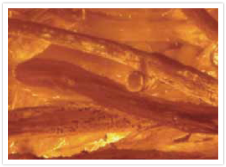

Many local areas in Muroto once flourished from the production of a high-quality charcoal called Tosa Binchotan charcoal. This charcoal was made from ubame oak, abundant in the Muroto area, and produced using a special method. This charcoal is still produced to this day, with a number of active kilns around Muroto.
-
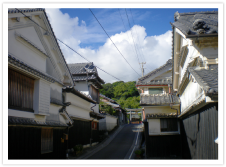

Traditional Architecture in Muroto was influenced by the necessity to build houses that could withstand the coastal weather here, with its strong storms and frequent typhoons. The unique designs of this traditional styling of housing can still be seen in Kiragawa, which features an Important Preservation Districts for Groups of Traditional Buildings.
-
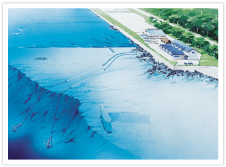

Muroto is rare in its proximity to the deep sea. Not far from the shore of the east coast, the depth of the water drops to over 1000m below sea level. This allows for the harvesting of nutrient-rich deep seawater, which is used in a number of industries, including seaweed cultivation, cosmetic treatments, and in farming on the marine terraces.
-
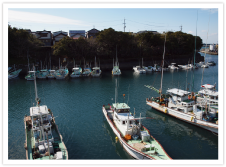

The sea, as much as the land, has played a large part in shaping the lives of the people of Muroto. Fishing has been, and continues to be, a central part of Muroto’s identity, and whaling historically played an important role in sustaining the community, leaving lasting cultural contributions.

